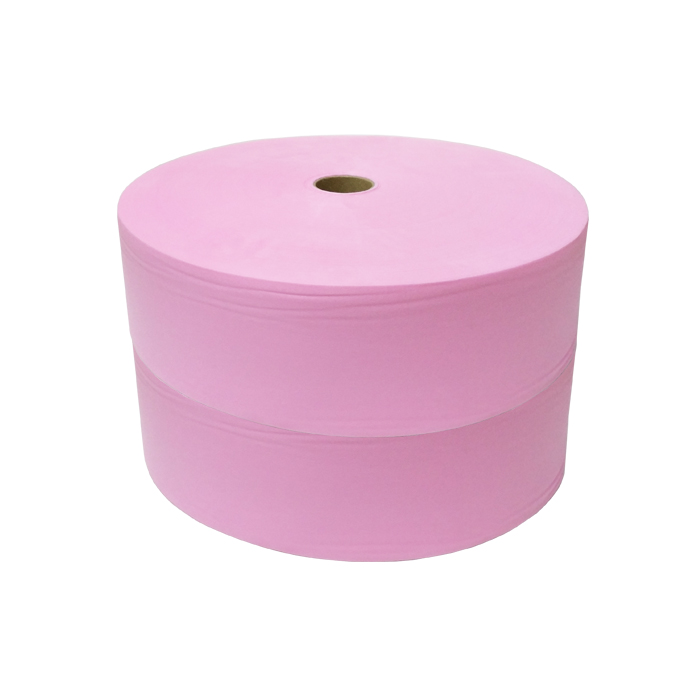Ultra-thin non-woven fabric is a member of the big family of non-woven fabrics. It is as light as yarn and as white as cotton batting. It has the characteristics of moisture absorption, non-toxicity, air permeability, light transmission, and soft texture. It uses low-melting fiber and high-melting fiber as synthetic raw materials, and adopts the production process of hot-melt non-woven fabrics. It is processed by carding, web forming, ply thermoforming, coiling, slitting and other processes. This process flow Compared with the conventional withered method, it can increase the work efficiency more than twice.
However, most companies are often unwilling to produce or develop such products for two reasons. One is that the production capacity of ultra-thin non-woven fabrics is relatively thicker than that of non-woven fabrics. If the same equipment is used 24 hours a day For the production of 3 tons of 9g of thin material, the theoretical capacity of 200g of thicker non-woven fabric can be increased by 22 times. The energy consumption is basically the same, but the price difference between the two is not matched, so there are many "clear" "Eye merchants" are not willing to make this kind of laborious and unpleasant product; the second is that the quality of ultra-thin non-woven fabrics is relatively more difficult to control, and the uniformity, tensile strength, anti-aging and other parameters of the product are light and thin. It will be more difficult to control, and it will be more prominent when quality problems occur. To put it bluntly, it is more difficult to do, and if the control is not good, it will smash materials, labor, and signboards. Why do you want to make such a difficult product?

Let us talk about the ultra-thin non-woven fabric market without discussing the above problems. Ultra-thin non-woven fabrics can be processed into many kinds of products and have a wide range of uses.
First of all, it is an ideal medical sanitary material. It has proper strength, flexibility, good moisture absorption, breathability, and blood water diffusion, can effectively resist bacterial penetration and liquid pollution, and can effectively control the way of pollution, avoid cross-infection, and reduce the shedding and purification of dust and hair. Operating environment, convenient use, and convenient storage, and these advantages are just beyond the reach of traditional cotton textile and viscose textile sanitary materials. "Ultra-thin non-woven fabrics" can be made into first aid kits, wound compresses, surgical towels, bandages, rubber, absorbent cotton, etc.
Ultra-thin non-woven fabrics have many uses in industrial and agricultural production. They can be made into insulating and reinforcing materials in turtle cables, synthetic leather base fabrics, food packaging bags, filter materials, high-strength paper, lens paper, Chinese medicine bags, Wiping cloths, linings of brocade boxes for handicrafts, linings of general clothing, fruit protective covers, nursery mats, etc. In addition, the embossing process can also be used to make beautiful and elegant napkins, tablecloths, tablecloths and other daily necessities.
The application market of ultra-thin non-woven fabrics is by no means just as mentioned above. For more information on non-woven fabrics, please pay attention to our official website. I just want to say, why do some companies have the right to speak and set prices in the market, or even lead the entire market trend? Because they can do what others cannot, they can see the vitality in the crisis and transform it.










